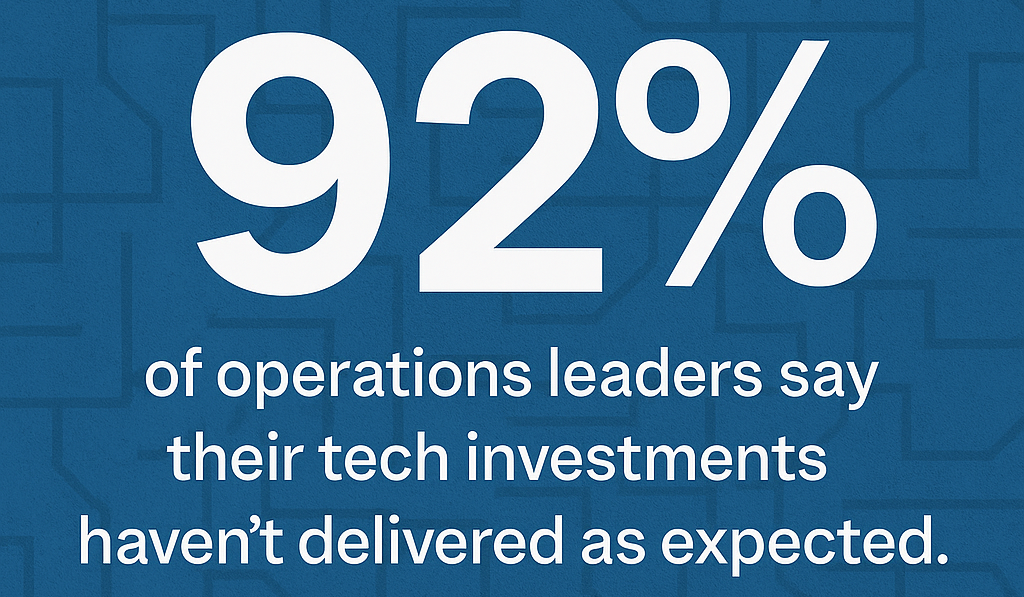92% of operations leaders say their tech investments haven’t delivered what they expected.
That number comes from PwC’s 2025 Digital Trends in Operations Survey, ‘Accelerating the shift from triage to transformation’.
While it’s a striking/concerning stat, it lines up with what we hear from our conversations with folks in industrial manufacturing.
The most common reasons for the lack of results?
Integration complexity and data problems.
We’re not saying all of these orgs are using outdated tools or systems that lack features….many companies are using modern platforms.
But when those tools don’t integrate fully, and data and workflows continue to live in silos, teams can’t get the maximum impact out of them.
It leads to all kinds of hidden inefficiencies:
– Managers building and rebuilding reports by hand
– Operators relying on “gut-feeling” instead of data-driven insight
– Leadership teams trying to make decisions without a comprehensive view of what’s happening on the floor
The technology is there; lack of good tech often isn’t the obstacle. It’s everything around it…the integration, the visibility, the way data is shared (or not shared) between systems and teams.
When teams can’t see the whole picture, it becomes nearly impossible to act with confidence.
We believe companies deserve more than pretty dashboards. They deserve smart connected systems that help them make better decisions with less friction so they can spend more time planning forward, and less time explaining what went wrong.
We’ve had some great conversations lately with ops leaders tackling this head-on. If you’re in the middle of it too, we’re happy to connect with you on what you may be experiencing and what we’re seeing in the industry.
Blog
92% of Operations Leaders say their Tech Investments Haven’t Delivered What they Expected




